We all know that you can take amazing photographs with the iPhone, but could it be a better camera physically? In this review we’ll take a look at the new SNAP! 6 case and lens system from Bitplay to see whether a physical shutter button and add-on lenses can really improve your iPhone photography experience.
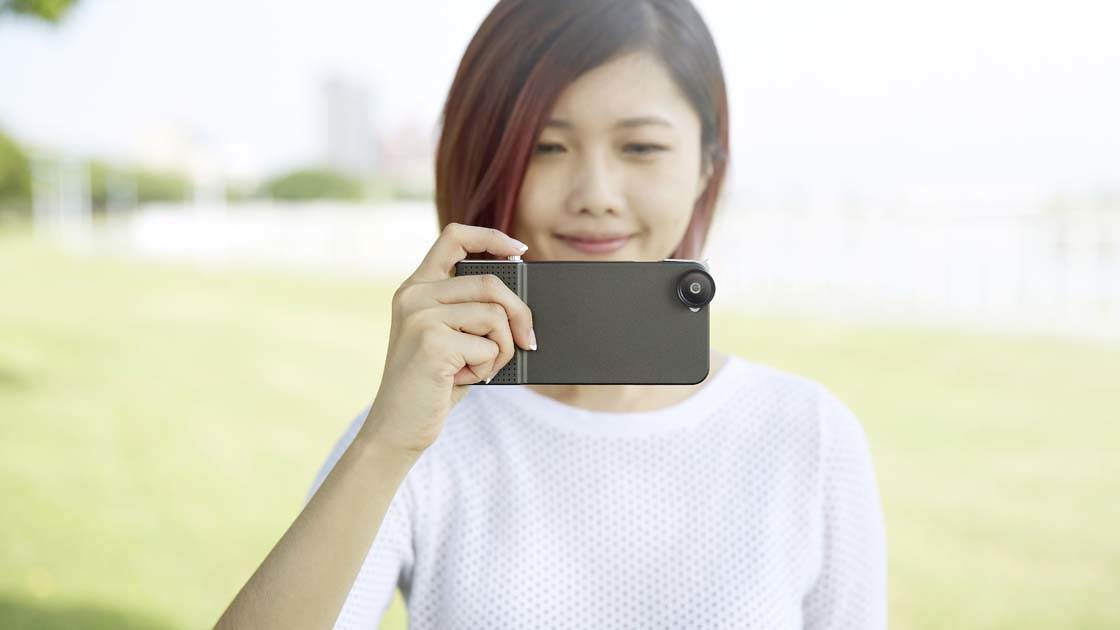
A few months ago, Bitplay launched a Kickstarter campaign to raise funding for the manufacture of their innovative SNAP! 6 iPhone case and lens system.
After successfully gaining funding for their project, the SNAP! 6 case and lenses are now on general sale. Will this combination of accessories make your iPhone 6 feel more like a camera than a phone?
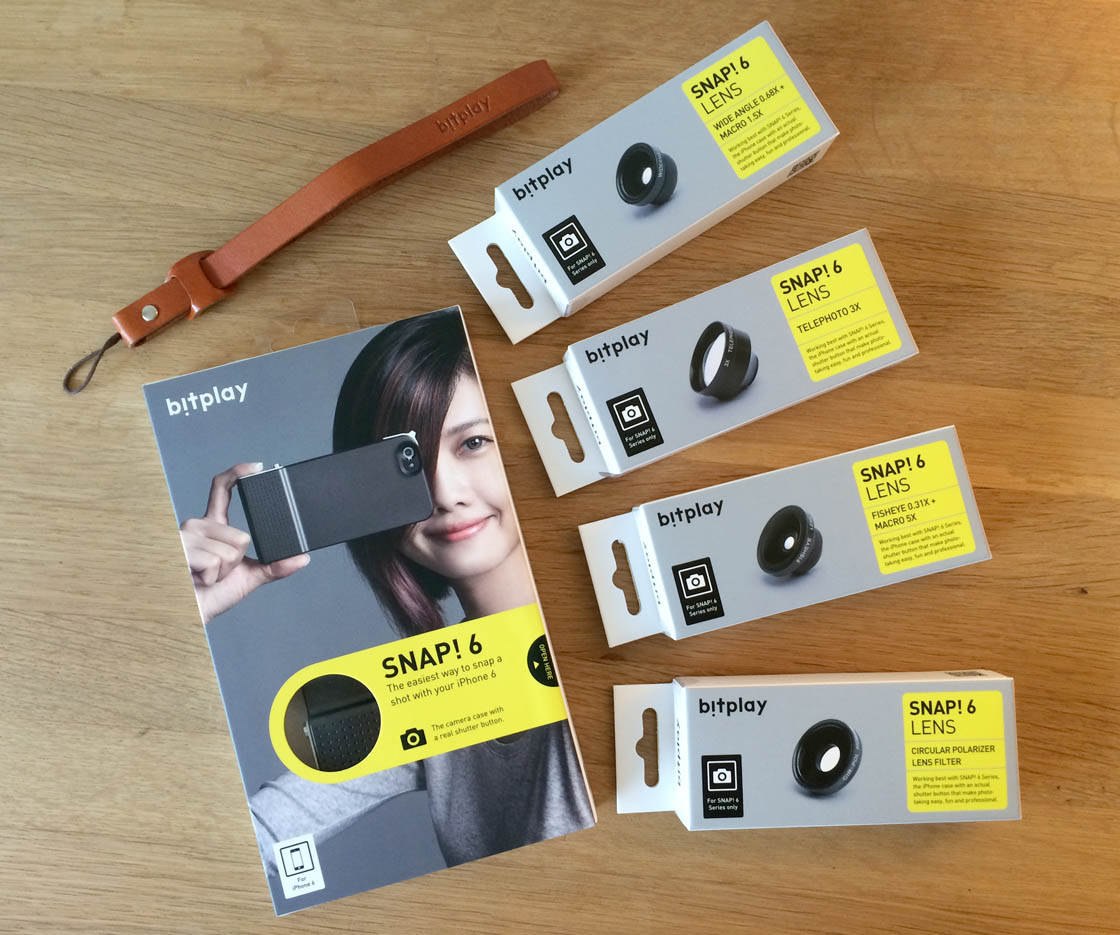
Well, Bitplay kindly sent us a SNAP! 6 case and set of lenses to try out, so let’s find out how it fared.
What Makes An iPhone Feel More Like A Camera?
Perhaps the single biggest omission from the iPhone for a photographer is a physical shutter button. Sure, you can use the volume control (on the iPhone itself or on a headphone cable), but having an actual button under your index finger where you intuitively expect it to be is such a welcome and familiar feature, making your iPhone feel much more like a traditional camera.

Secondly, having a little more bulk for your other hand to grip onto not only accentuates the “real camera” feel, but it definitely improves camera control.
Lastly, the ability to attach different lenses to the iPhone quickly and easily can really take your photography into another league.
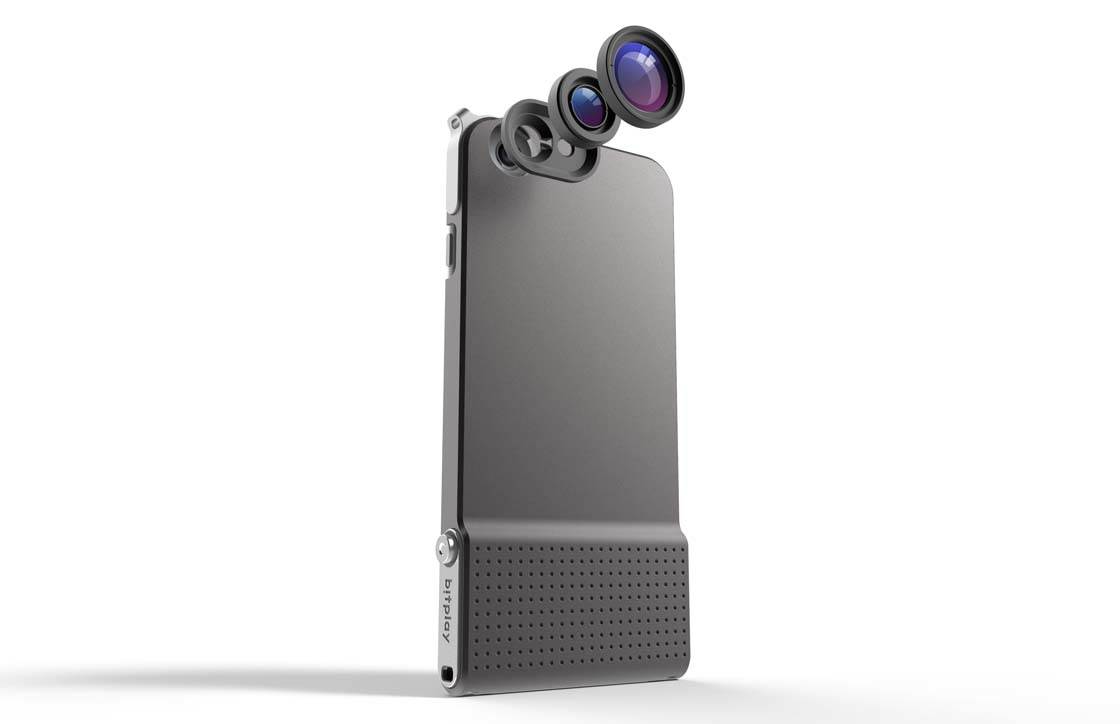
The new SNAP! 6 case and lens system delivers on all of the above. So let’s take a look at how the case and lenses actually worked once attached to the iPhone.
The Case With Shutter Button
The case is plastic and my first impression was that it felt a little cheap and brittle, however, once it’s attached to the iPhone 6 it feels much more sturdy. It fits the iPhone 6 very snugly and shows no sign of coming off accidentally.

The raised panel which provides the right hand with something to grip feels like it could be a little thicker, but clearly Bitplay didn’t want to make the case too bulky as this would be a problem for some customers. We all still want the iPhone to fit in our pocket, right?
The shutter button is perfectly positioned, making the iPhone feel more like a “real” camera. It works by pressing down one of the volume buttons (which you can use as an alternative shutter button rather than tapping the on-screen shutter button).

The shutter button does feel somewhat plasticky and the action isn’t “positive” – you don’t get a positive click sensation through the tip of your finger like you do when using the volume buttons without the case. This is most likely due to flexing in the hidden components within the case which connect the case’s shutter button to one of the volume buttons on the phone.
The shutter button doesn’t provide a half-press focusing facility like you get on a digital camera, but this is understandable since the volume buttons don’t allow you to pre-focus using a half-press.
The case material is quite shiny and feels very slippery in the hand, so care should be taken in this regard, although wearing the wrist strap provided will prevent most disasters.
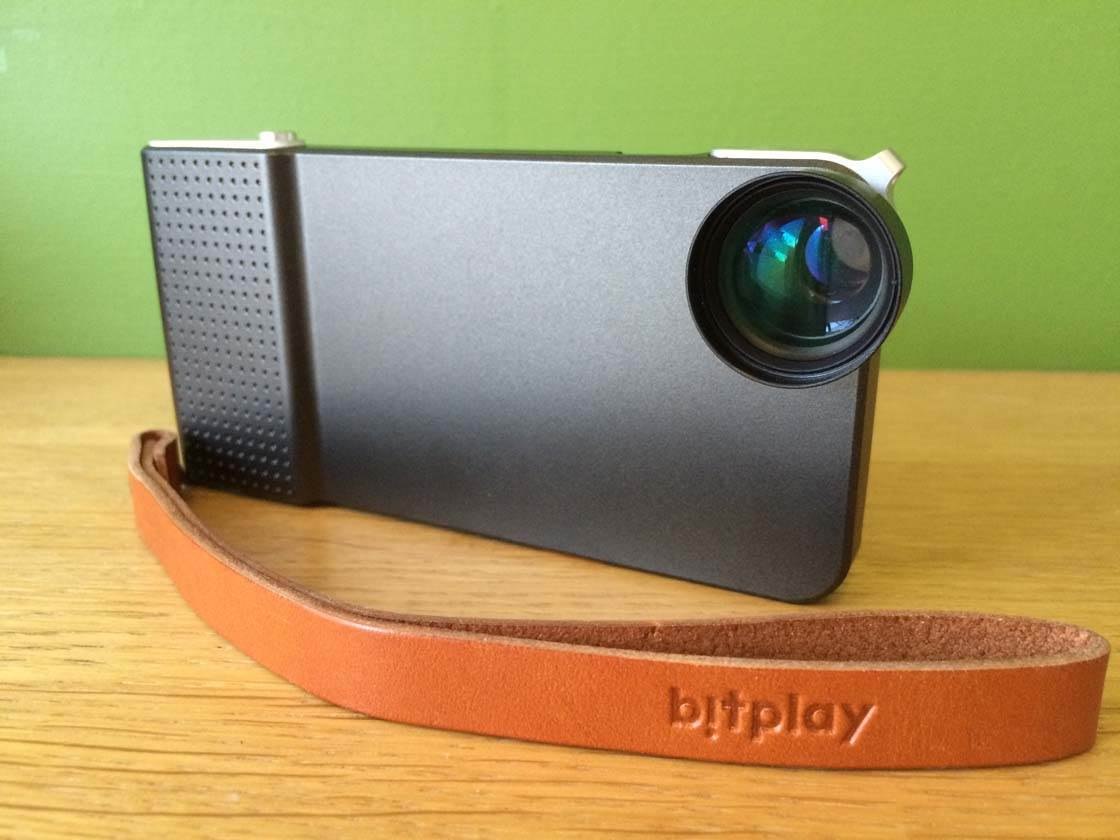
The sample case we were sent came with two wrist straps – a basic cord type and a more attractive leather strap which is available as an optional extra. The leather strap was rather stiff but I’m sure this would soften over time, or could be treated, and would become more comfortable for the wearer.
The case has three lugs for attaching the wrist strap. The most prominent is right next to the lens, which is the complete opposite corner to where I would want to attach it.
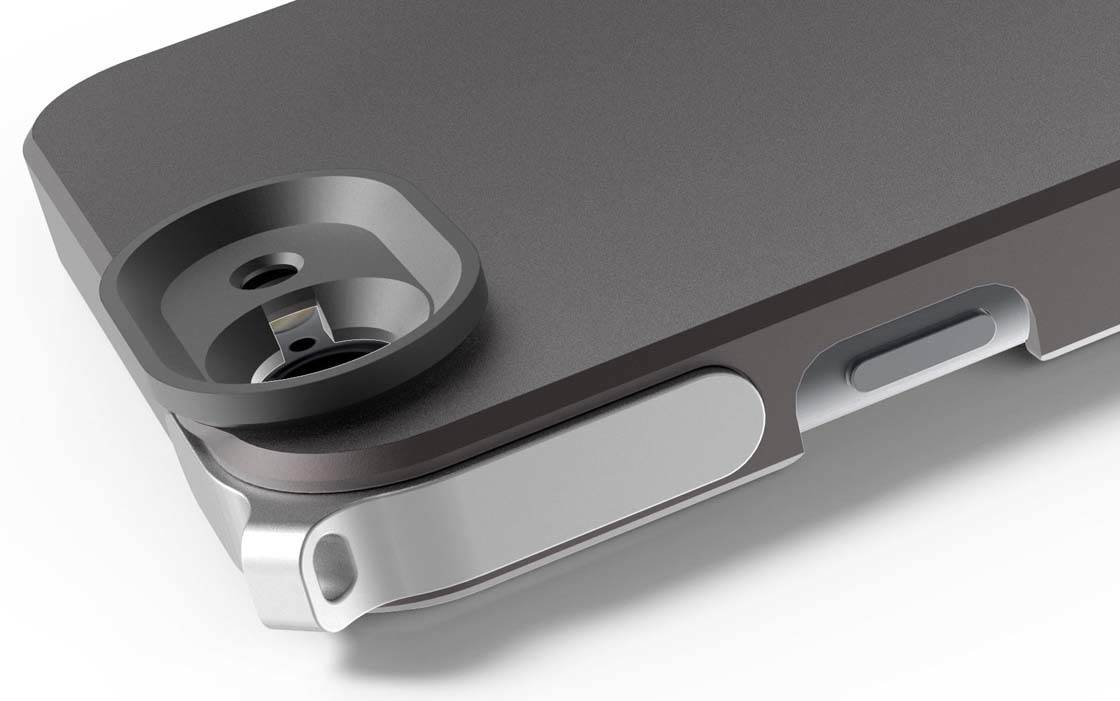
It makes sense to wear it on your right hand as this is the hand which will be firing the shutter button on the case. Luckily, one of the other two (less prominent and less substantial) lugs is in the opposite corner.
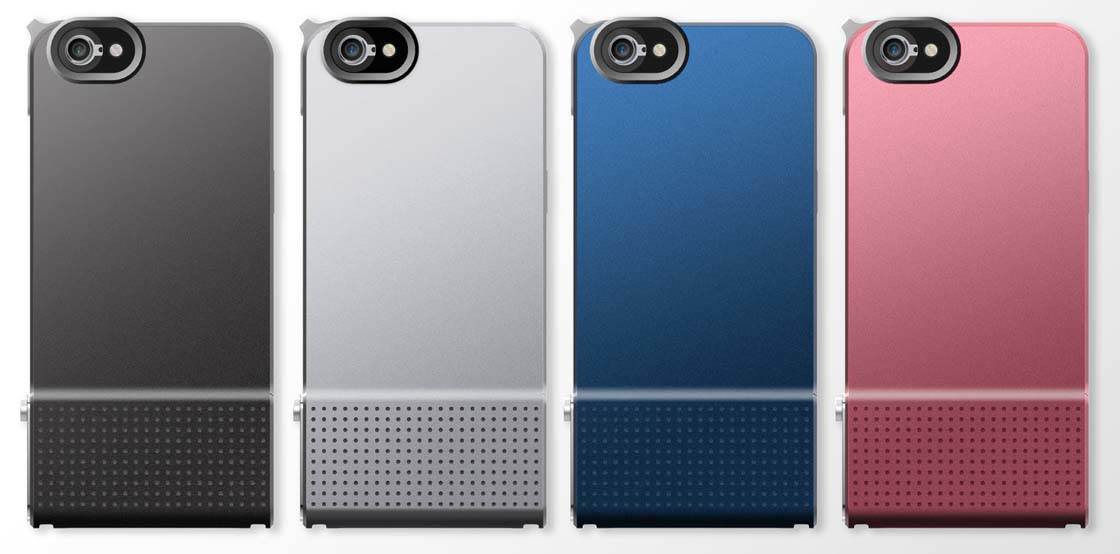
The case is available in four colors: Classic Black, Premium Silver, Deep Blue and Strawberry Pink.
The Lenses
The SNAP! 6 lenses are made of glass. The advantage of glass lenses over cheaper plastic alternatives is that they ought to result in better quality images.
Whenever we put something in between our subject and the camera (like a lens or filter) we can’t help but affect the amount or quality of the light passing through it. Therefore it’s vital that we use the best quality lens glass we can afford.
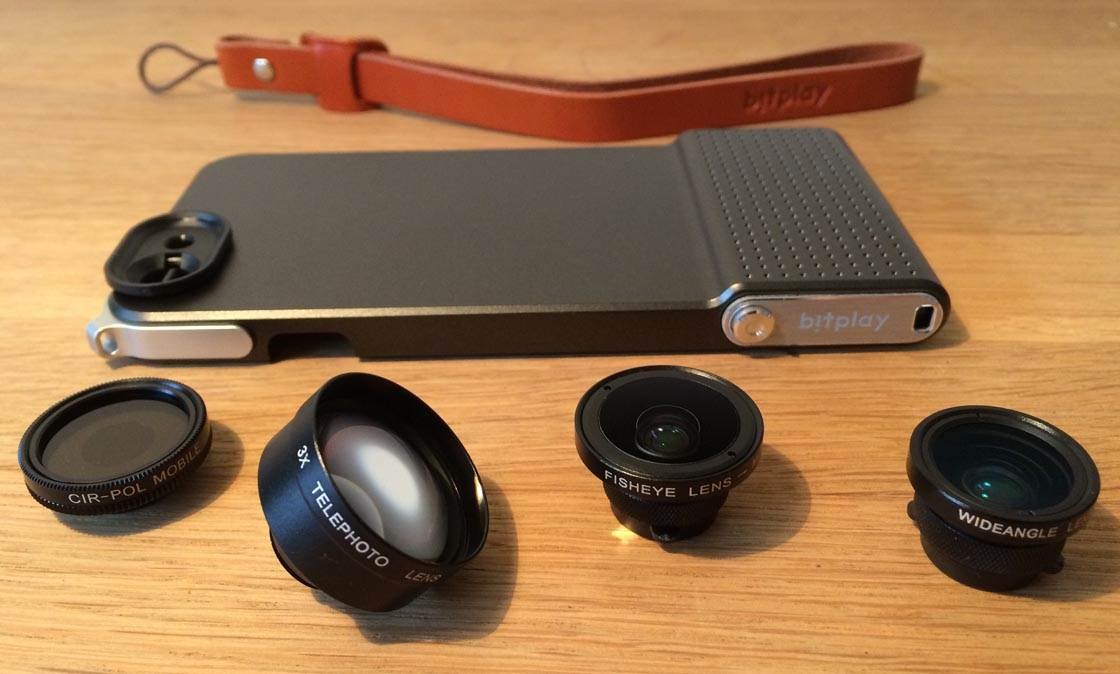
To be truthful, these lenses aren’t perfect – the resulting photos do suffer from softness around the edges with some of the lenses, as you’ll see in the sample images below.
The lenses attach easily and securely by removing the protective lens cover from the case, and then screwing them directly into the lens hole on the case. Note that you can’t use the flash while lenses are attached as lens will stop the light from the flash reaching your subject.
Each of the lenses come with lens caps and their own drawstring cloth bag. This attention to detail from Bitplay certainly adds to the feeling of quality.
So, lets take a look at the different lenses on offer and the quality of the images that you get from them.
Wide Angle + 1.5x Macro Lens
This two-part lens comprises a 1.5x macro lens with an additional lens that attaches to the macro lens, turning it into a 0.68x wide angle lens.
Macro lenses are used for capturing close-up photographs of flowers and insects, or anything small that you want to get really close to. Wide angle lenses are great for landscape photography or indoors when you want to get more of the scene into your frame.
The 1.5x macro lens is fun to use as you start to see things you don’t easily see with the naked eye. I used this lens to take a close up shot of the flower below.

A common issue with all macro lenses is that depth of field is extremely shallow, which means you’ll only get things in focus which are the same distance from the sensor across the entire scene.
This can be used to your advantage, blurring out unwanted detail and backgrounds. It certainly has impact and looks impressive, but it can be difficult to get sharp detail on the parts of the scene you do want in focus.
With the wide angle attachment fixed onto the macro lens, you get a wider angle of view, allowing you to fit more of the scene into your frame. Here’s a shot without any lens attachment.
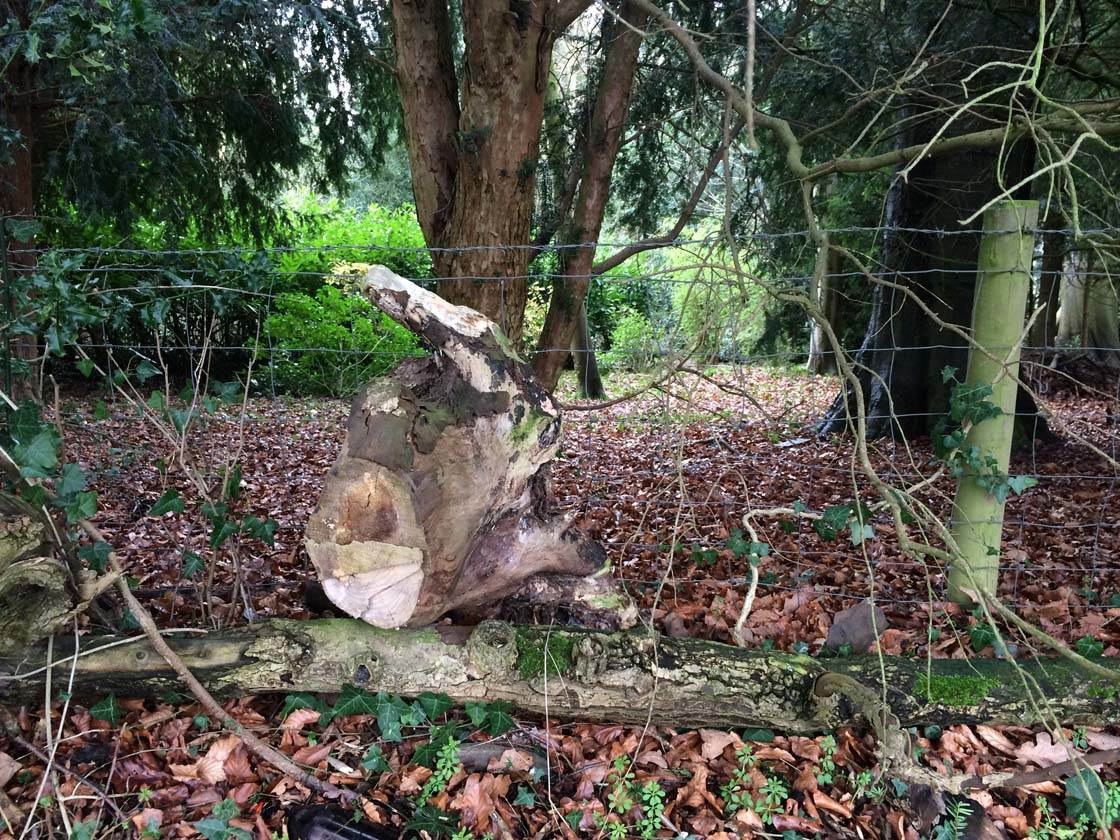
And below is the same scene shot with the wide angle lens attached to the iPhone. I took the photo from the same position as the one above, but the lens has allowed me to get much more into the frame.
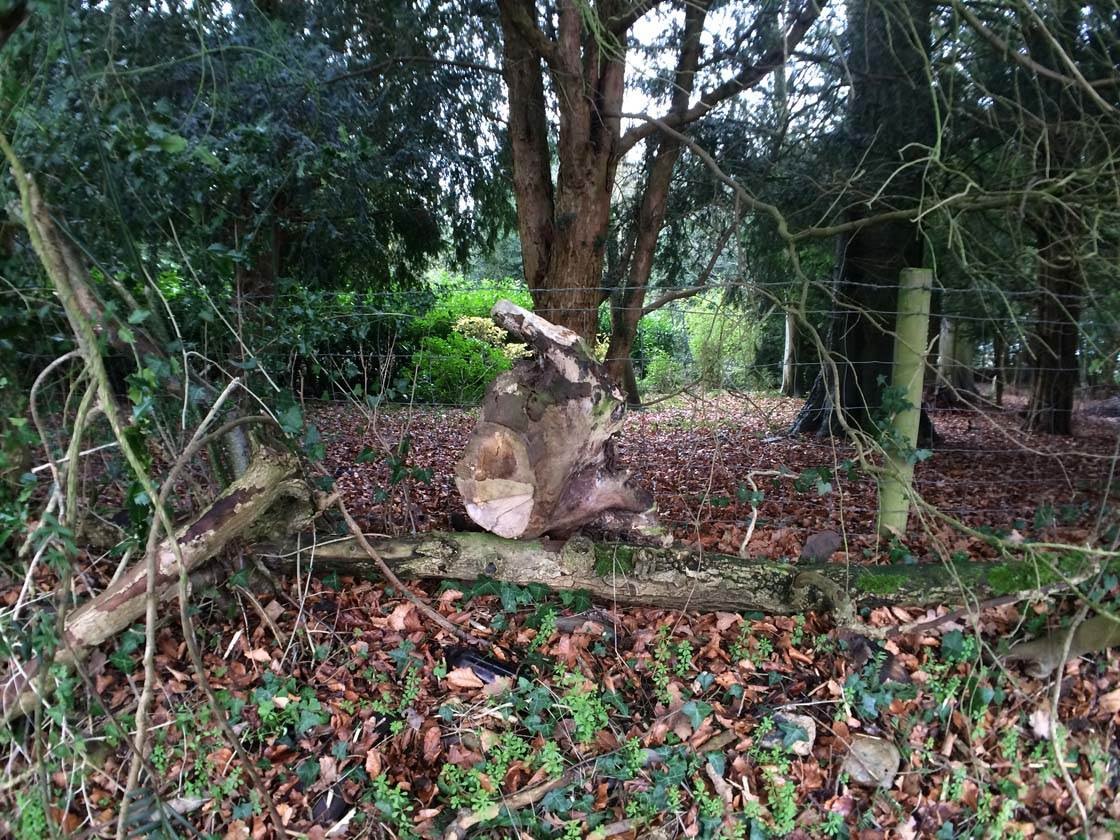
When shooting with the wide angle configuration, this lens did result in some blurring and loss of detail around the edges of the image. Below is another photo taken with the wide angle lens where you can clearly see that the edges aren’t completely sharp.

There’s also some problems with perspective. Lines that should be straight appear slightly curved. You often get this to some extent with wide angle lenses, and it’s more pronounced the closer you are to your subject, but this lens does cause some distortion with distant objects too.
Fisheye + 5x Macro Lens
Like the wide angle lens, this fisheye lens comprises two lenses – a 5x macro lens with an additional 0.31x fisheye attachment. This attaches to the macro lens, turning it into a fisheye lens.
The fisheye lens produces extremely wide angle results. It’s what I would call a “creative” lens in so much as the results aren’t life-like or realistic. You wouldn’t use it for everyday iPhone photography – it’s for creating unique, exaggerated results with extreme distortion and perspective.
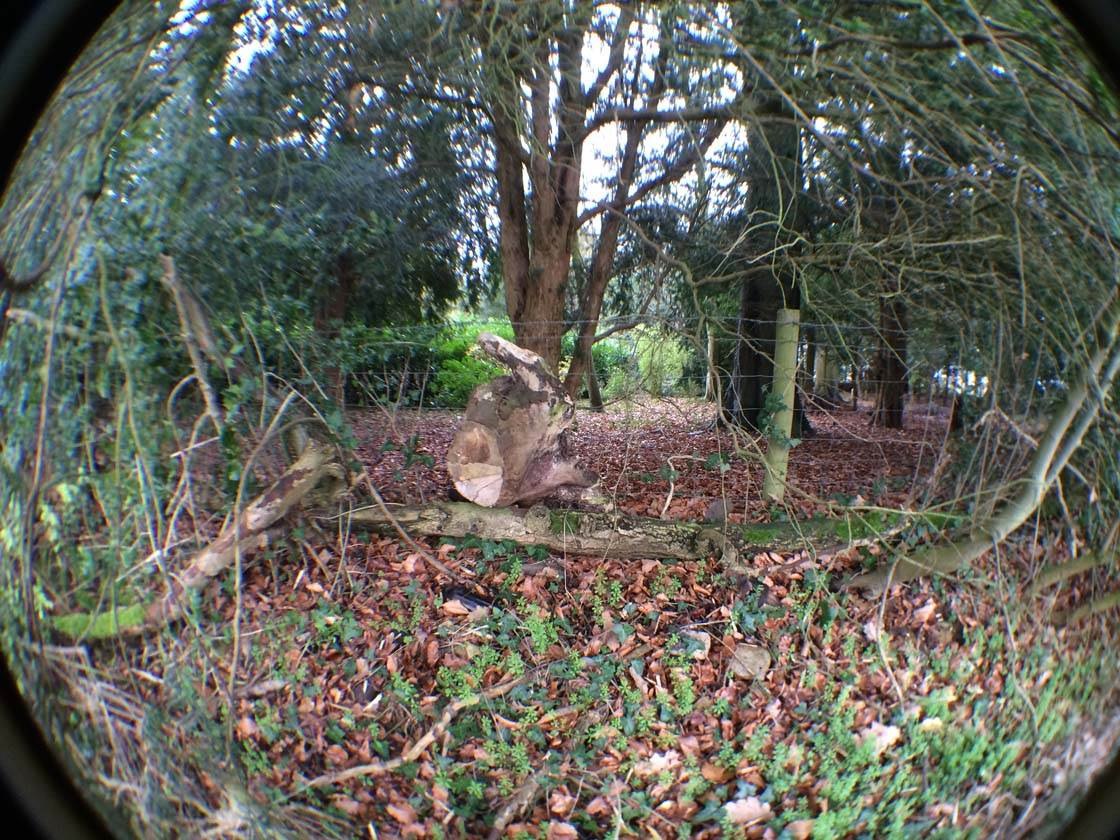
A landscape scene is rendered almost otherworldly as the vertical and horizontal features converge at the edge of the image. A close-up of a face taken with this lens will result in a large nose on a small head!
It does have practical uses too. The atmosphere of a crowded or ornately decorated room can be captured effectively with this lens.
Unfortunately (but unsurprisingly at this price) the image edges suffer with a lack of sharpness, and you can actually see the black edges of the lens in the corners. For fun and creativity you might enjoy using this lens, but it’s a bit of a niche gimmick and not something you’d use for “serious” photography.
Telephoto Lens
Telephoto lenses are used for getting a closer view of subjects in the distance, without you having to move physically closer. Unsurprisingly, this is the largest of the lenses on offer.

It looks impressive and feels reassuringly weighty, reminding us that the lens is made of glass rather than a lighter plastic.
The lens provides a useful magnification, but unfortunately at the expense of image quality. When shooting with this lens the image edges suffered with serious loss of detail and sharpness.

In my opinion, you would be better off “zooming with your feet,” i.e. getting closer to your subject, if possible. You’d have to crop away a fairly large portion of the image to get rid of the blurry edges created by this telephoto lens.
Circular Polarizer Filter
Arguably this is the most useful accessory reviewed here. It doesn’t distort the image in any way. Put simply it just filters out light scattered by air molecules. This results in images with reduced glare and reflectance off shiny subjects such as foliage, metallic surfaces, glass and water.
The pair of images below were taken with and without this filter. You can see the improvement in the image on the right which was taken with the polarizer filter. It’s done a great job of reducing the shiny glare on the surface of the leaf.
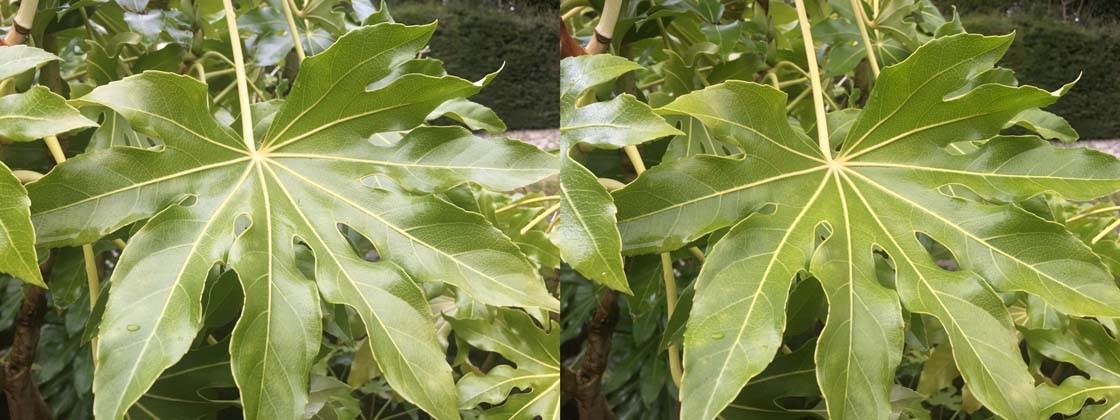
This filter lens provides the ability to “dial-in” the strength of the effect simply by rotating the outer ring of the filter. You’ll see the results on your iPhone’s screen even before you take the picture.
It’s a great tool for making reflections disappear, revealing details hidden beneath the reflected surface. It’s also great for achieving a more vivid colored sky in landscape photos, and making rainbows stand out more.
Buying SNAP! 6 Case & Lenses
You can order the SNAP! 6 case, individual lenses and accessories from the Bitplay website. It’s currently only available for the iPhone 6, but they’re working on a model for the iPhone 6 Plus which will hopefully be ready soon.
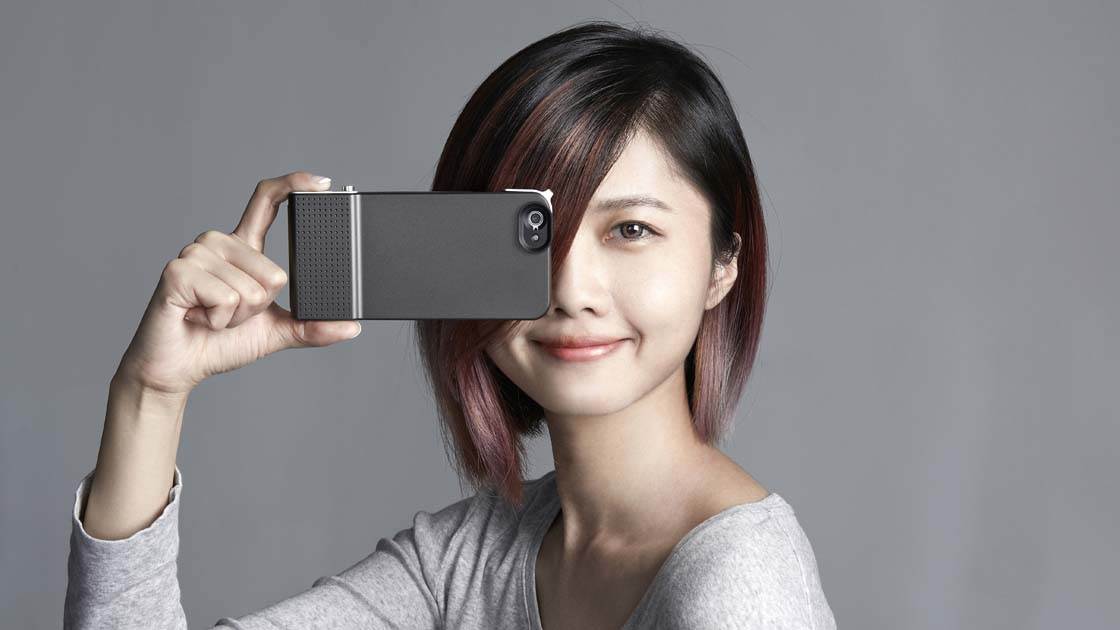
The case (including nylon wrist strap) costs $50. If you want the leather wrist strap you can buy this separately for an extra $20.
The Wide Angle + 1.5x Macro Lens costs $25. The Telephoto Lens is the most expensive, priced at $40. The Fisheye Lens costs $35, and the Circular Polarizer Filter is $38.
Review Conclusion
On first inspection, the SNAP! 6 case and lenses have an impressive appearance with professional looking packaging and attention to detail.
The case on it’s own certainly does make your iPhone feel more like a real camera with its physical shutter button and wrist strap, although I would prefer it to be made from a more grippy material.
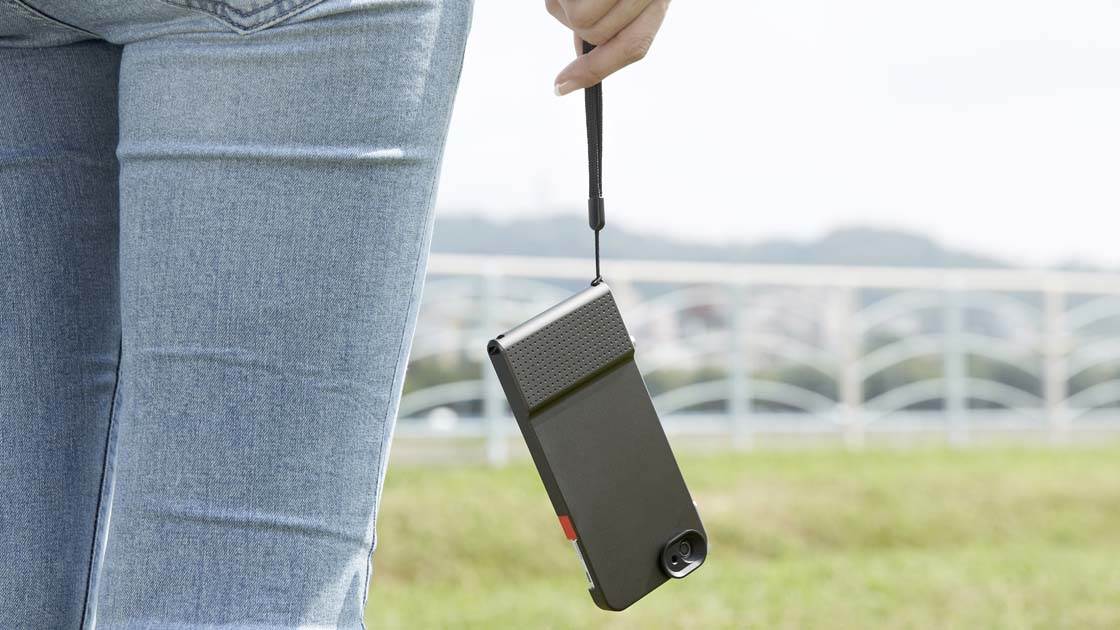
As you can see from the photographs I took, these lenses are not a professional, high-end product capable of producing high quality images. However, they do deliver some creative options, and the circular polarizer filter does an excellent job of removing glare and reflections from shiny surfaces.
We’ve not been able to test it to destruction so don’t know how the case will cope with daily use, especially when it comes to repeated attachment of the various lenses and pressing the shutter button.
The great thing about SNAP! 6 is that you can purchase all of the items individually, so if you’re not keen on the lenses but you like the idea of the case with shutter button and strap, you could just purchase this on its own.
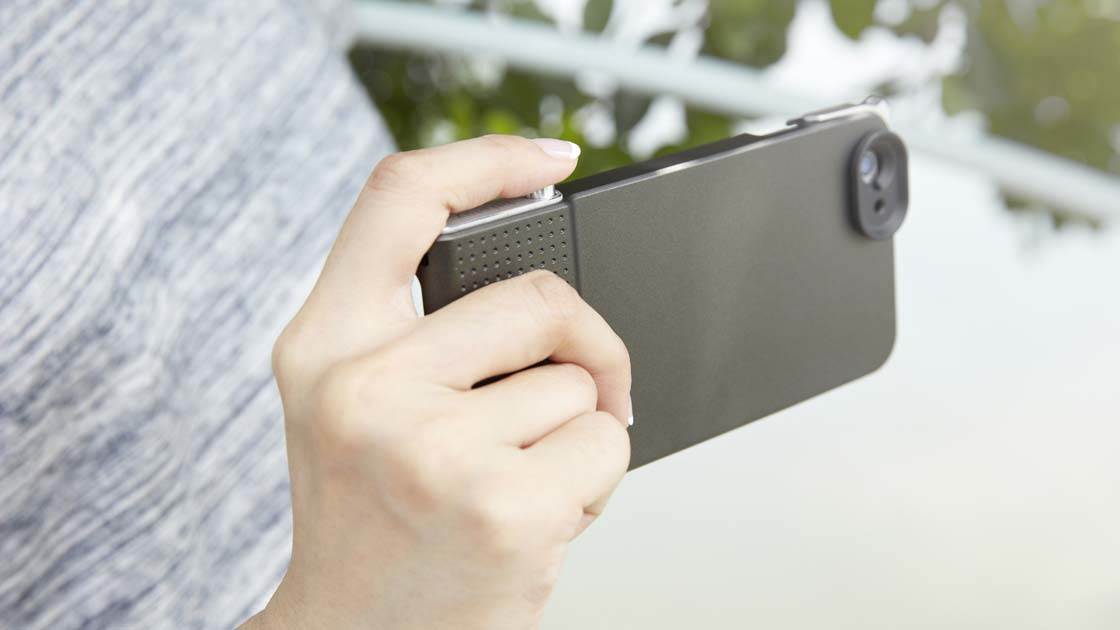
If you’re interested in reading about other iPhone lens systems, check out our article on lens systems compatible with the iPhone 6 and 6 Plus. You can also read our review of the Olloclip 4-in-1 Lens with sample images from each lens, and the first reviews of the Moment iPhone lenses which are proving incredibly popular.
Incidentally, Moment are just in the process of developing the Moment iPhone Case which is compatible with their lenses and has a real electronic shutter button. It seems like iPhone cases with real shutter buttons and add-on lenses are catching on!


Pretty awesome. I wish the lenses were better quality.
For superb image quality, check out these Inmacus lenses that we reviewed recently: http://iphonephotographyschool.com/inmacus-lenses/
Will do, thanks. I do love that case with the physical button though.